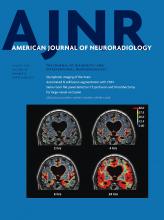Abstract
BACKGROUND AND PURPOSE: Direct aspiration is a recognized technique for revascularization in large-vessel ischemic strokes. There is ongoing debate regarding its efficacy compared with stent retrievers. Every delay in achieving revascularization and a decrease in reperfusion rates reduces the likelihood of patients achieving functional independence. We propose a standardized setup technique for aspiration-first for all anterior circulation thrombectomy procedures for increasing speed and recanalization rates.
MATERIALS AND METHODS: We analyzed 127 consecutive patients treated by a standardized approach to thrombectomy with an intention to perform aspiration-first compared with 127 consecutive patients treated with a stent retriever–first approach. Key time metrics evaluated included groin to first angiogram, first angiogram to reperfusion, groin to first reperfusion, and length of the procedure. The degree of successful recanalization (TICI 2b–3) and the number of passes were compared between the 2 groups.
RESULTS: In 127 patients who underwent the standardized technique, the median time from groin puncture to first reperfusion was 18 minutes compared with 26 minutes (P < .001). The duration of the procedure was shorter compared with the stent retriever group (26 minutes in the aspiration first group versus 47 minutes, P < .001) and required fewer passes (mean, 2.4 versus 3.1; P < .05). A higher proportion of patients had a TICI score of 2b–3 in the aspiration-first group compared with stent retriever group (96.1% versus 85.8%, P < .005).
CONCLUSIONS: Our study highlights the increasing speed and recanalization rates achieved with fewer passes in a standardized approach to thrombectomy with an intention to attempt aspiration-first. Any attempt to reduce revascularization time and increase successful recanalization should be used.
ABBREVIATIONS:
- ADAPT
- A Direct Aspiration First Pass Technique
- ENT
- emboli to a new territory
- IQR
- interquartile range
- RCT
- randomized controlled trial
- © 2019 by American Journal of Neuroradiology







